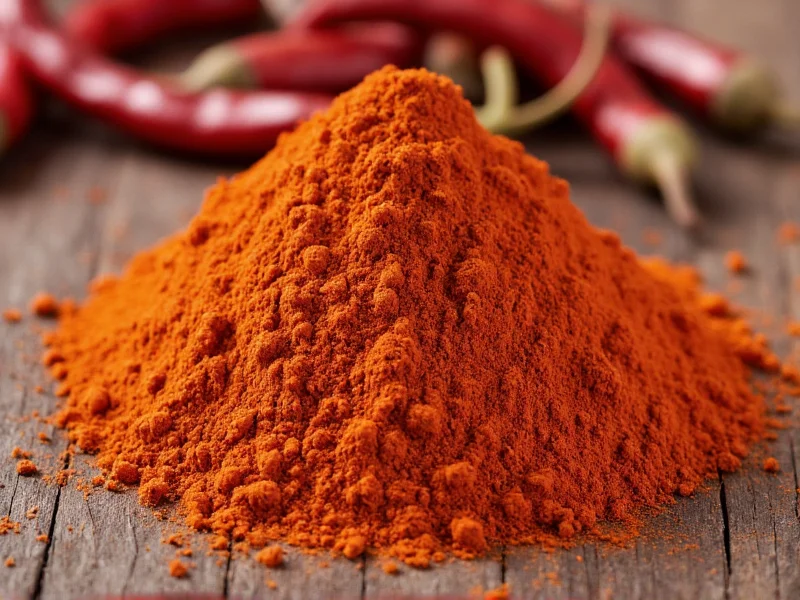Understanding Smoked Cayenne Pepper Powder
Smoked cayenne pepper powder represents a sophisticated evolution of the traditional cayenne seasoning that home cooks and professional chefs increasingly seek for its nuanced flavor profile. The smoking process transforms the bright, straightforward heat of regular cayenne into a more complex seasoning with layered sensory characteristics.
The Smoking Process and Flavor Transformation
Creating authentic smoked cayenne involves carefully controlled smoking of ripe cayenne peppers, typically using hardwoods like hickory, mesquite, or applewood. This slow smoking process—often taking 12-24 hours at temperatures between 150-200°F—not only preserves the peppers but fundamentally alters their chemical composition.
The smoke compounds, particularly guaiacol and syringol, penetrate the pepper flesh, creating new flavor dimensions while the capsaicin responsible for heat remains largely intact. This results in a spice that delivers the expected cayenne heat but with added complexity that standard dried cayenne cannot provide.
| Characteristic | Smoked Cayenne Pepper Powder | Regular Cayenne Pepper Powder |
|---|---|---|
| Heat Level (Scoville) | 30,000-50,000 SHU | 30,000-50,000 SHU |
| Primary Flavor Notes | Smoky, earthy, complex, with subtle wood notes | Bright, sharp, straightforward heat |
| Processing Method | Peppers smoked before grinding | Peppers air-dried before grinding |
| Best Culinary Applications | Barbecue, smoked meats, hearty stews, roasted vegetables | Soups, sauces, quick-cooking dishes, finishing spice |
| Shelf Life | 12-18 months (smoke compounds degrade faster) | 24-36 months |
Practical Culinary Applications
Understanding how to use smoked cayenne pepper powder effectively separates novice cooks from those who maximize flavor potential. The smoky dimension works exceptionally well in dishes where you want to evoke the sensation of wood-fired cooking without actual smoking equipment.
For barbecue enthusiasts, smoked cayenne makes an excellent addition to dry rubs for ribs, brisket, or pulled pork, enhancing the existing smoky elements. When making chili, add smoked cayenne during the sauté phase rather than at the end to allow the smoke compounds to meld with other ingredients. The powder also elevates simple roasted vegetables—toss carrots, sweet potatoes, or Brussels sprouts with olive oil and a pinch of smoked cayenne before roasting.
Chefs often use smoked cayenne in applications where regular cayenne would be too one-dimensional. Consider adding it to black bean soup for depth, incorporating it into mayonnaise for a smoky aioli, or using it to season roasted nuts for a complex snack. The key is recognizing that smoked cayenne contributes both heat and flavor, so you may need slightly less than regular cayenne to achieve balanced results.
Substitution Guidance and Storage Recommendations
When smoked cayenne pepper powder isn't available, proper substitution requires understanding both the heat and smoke components. For the heat element, regular cayenne can substitute at a 1:1 ratio. To approximate the smokiness, add 1/8 teaspoon of smoked paprika per 1/2 teaspoon of smoked cayenne required. Liquid smoke works in liquid-based recipes but use sparingly—just 1-2 drops can mimic the smoky dimension.
Proper storage maintains smoked cayenne's distinctive qualities. Keep it in an airtight container away from light and heat sources. The smoke compounds degrade faster than capsaicin, so smoked cayenne typically remains at peak quality for 12-18 months, compared to 2-3 years for regular cayenne. To test freshness, rub a small amount between your fingers—if the aroma lacks complexity or the heat seems diminished, it's time to replace your supply.
Creating Your Own Smoked Cayenne Powder
For culinary enthusiasts seeking ultimate control over quality, making your own smoked cayenne pepper powder offers customization opportunities. Start with fresh cayenne peppers (preferably at full red ripeness for maximum capsaicin). After thorough washing and drying, smoke the peppers using your preferred wood type at 165°F for 18-24 hours until completely dehydrated but not brittle.
Once cooled, remove stems and seeds (keeping seeds increases heat), then grind using a dedicated spice grinder. For optimal flavor integration, allow the freshly ground powder to rest in an airtight container for 48 hours before use—this lets the smoke compounds fully meld with the capsaicin. Store your homemade smoked cayenne in a dark glass jar to preserve its complex flavor profile.
Frequently Asked Questions
Can I substitute smoked paprika for smoked cayenne pepper powder?
Yes, but with important considerations. Smoked paprika provides the smoky element but lacks cayenne's significant heat (paprika ranges from 100-1,000 SHU while cayenne is 30,000-50,000 SHU). Use 1 part smoked paprika plus a pinch of regular cayenne to approximate smoked cayenne's heat and smoke profile. This substitution works well in dishes where you want smokiness without overwhelming heat.
Does smoked cayenne pepper powder have the same health benefits as regular cayenne?
Smoked cayenne retains most health-related compounds found in regular cayenne, including capsaicin (which supports metabolism) and vitamin A. The smoking process doesn't significantly degrade these components. However, some heat-sensitive antioxidants may experience minor reduction during smoking. Both varieties offer similar nutritional profiles, with the primary difference being the added smoke compounds in smoked cayenne.
Why does my smoked cayenne pepper powder seem less hot than regular cayenne?
The perception of reduced heat occurs because the smoky flavor compounds compete with capsaicin receptors on your tongue. The actual Scoville rating remains similar (30,000-50,000 units), but the smoke creates a more complex sensory experience that can make the heat feel more rounded and less immediate. This is why many chefs prefer smoked cayenne—it delivers heat with more flavor dimension rather than pure burn.
What's the best way to incorporate smoked cayenne into liquid-based recipes?
For soups, stews, and sauces, add smoked cayenne during the sauté phase when cooking aromatics like onions and garlic. This allows the oil-soluble smoke compounds to dissolve properly. If adding later in the cooking process, mix the powder with a small amount of oil or broth first to prevent clumping. Avoid adding directly to cold liquids, as this can create uneven distribution and bitter pockets of concentrated spice.











 浙公网安备
33010002000092号
浙公网安备
33010002000092号 浙B2-20120091-4
浙B2-20120091-4